Modern AMG Power Meets Classic Mercedes-Benz Design at Kwiek Classics
When you think of AMG, where does your mind go? Stuttgart and Affalterbach? How about Nashville?
That’s where you’ll find Kwiek Classics (pronounced like “quick classics”), a rapidly expanding company specializing in building what can be summarized as AMG’s greatest anachronistic hits. The formula is simple enough—marry the most fun late-model AMG engines to the best classic Benz shapes—but these creations are no mere “swaps.”
When Matt Kwiek and his team perform a high-horsepower heart transplant into something like a stately W108 S-Class from the ‘80s, a DTM-style 190E, or a slick big-body coupe from the W126 era, the rest of the machine is appropriately augmented. These are comprehensive conversions that see nearly every mechanical and aesthetic facet—the chassis, transmission, suspension, brakes, bodywork, and interior—elevated alongside the more potent powerplant with almost exclusively with OEM Mercedes-Benz and AMG components.
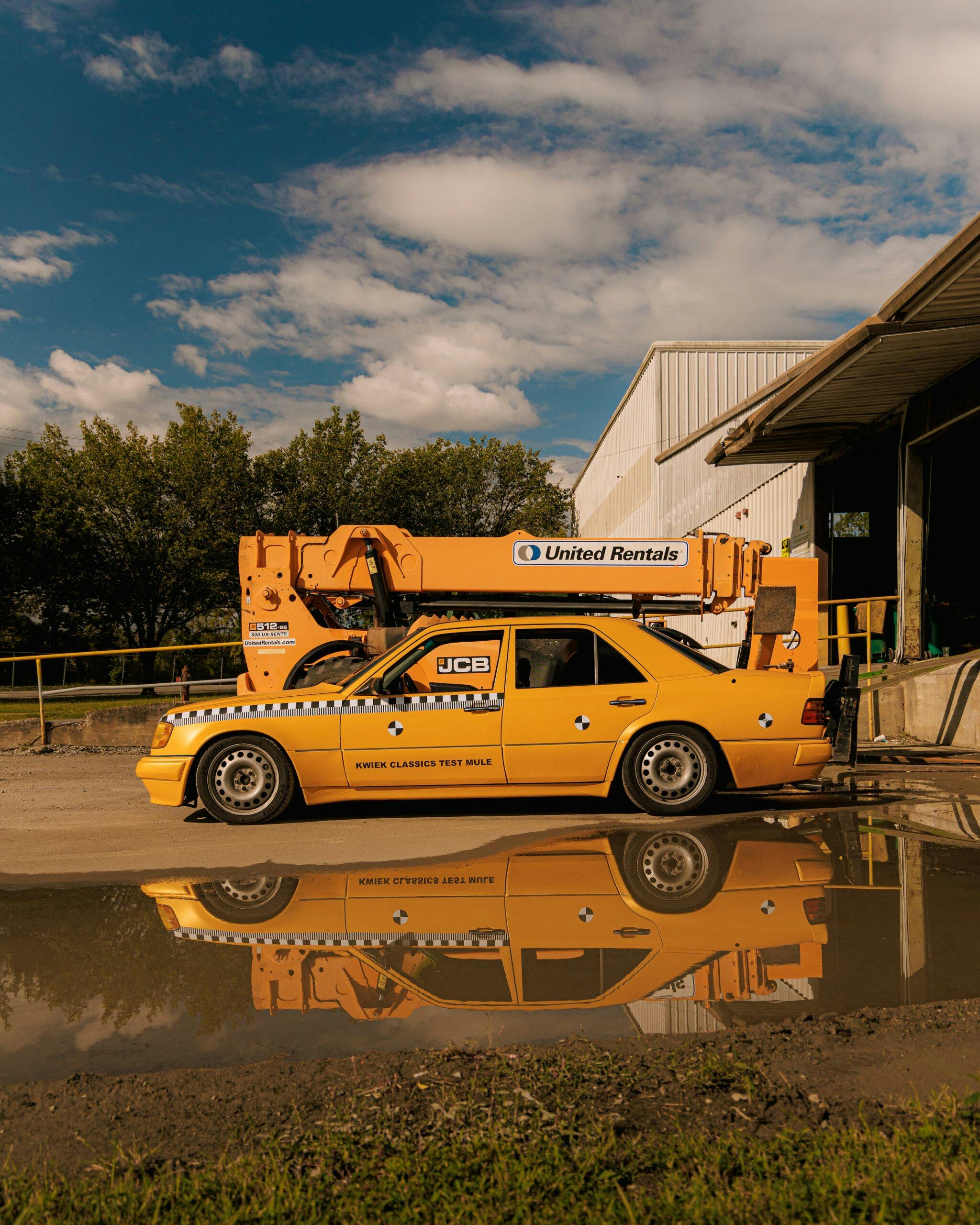
Kwiek’s history of vehicular gene splicing has treated him well in this regard, and after a decade spent in and under these cars, he’s now armed with an exhaustive knowledge of parts catalogs that he speaks about like someone reciting the digits of Pi.
Owners of his Merc conversions can lift their hoods proudly at local Cars & Coffee meets to the ensuing oohs and aahs of those who recognize a well-done restomod, but showing off isn’t the point, and neither is creating something that erases all traces of the car’s innate personality. That said, their nature is heavily nurtured.
While a 500-plus-horsepower supercharged V-8 linked to a six-speed manual in place of a sleepy and slushy straight-six/automatic combination might seem like overkill on paper, the finished products still feel “right.” That’s a tricky concept to define, but Kwiek says every potential customer who’s test-driven a completed Kwiek Classics build has put down a deposit for one of their own. The tally is at 17 fully converted cars and counting.
Their starting points range from station wagons to coupes and span half a century of Mercedes-Benz history (many of them from Bruno Sacco’s tenure as head of design), and most have been fitted with an AMG V-8. More specifically, Kwiek has developed an affinity for the M113 and M113K family of engines (the “K” denotes a supercharged “Kompressor” variant) used in various M-B vehicles between 1997–2011. These engines were originally installed in cars and trucks like the S55, E55, C55, G55, and so on.

The M113-powered builds built the business in the beginning (Kwiek Classics officially opened in December 2022), and Kwiek is currently working on standardized conversion packages featuring these engines, but he’s also not content with a diet consisting solely of bread and butter…


Here’s where the scruffy yellow sports sedan sporting crash-test graphics comes into the picture. Yes, it’s a real 500E, but don’t cry sacrilege just yet. You’re looking at a 500-horsepower proof of concept, a car that was saved from the grave, a prototype for Kwiek Classics’ future, and a marketing stunt that stuck the landing.
Recently, a few prospective clients have asked about the possibility of powering their cars with the venerable AMG M156 V-8. For those not versed in the arcaneness of engine codes, this is the brawny 6.2-liter V-8 that AMG designed from the ground up in the mid-2000s. Besides being the first AMG mill that wasn’t based on a standard Merc motor, the M156 conferred the most enthusiast cred to late-model “German muscle cars” like the W204-generation (2007–2014) C 63 AMG. The M156 is a modern icon that produced 518 horsepower and 465 pound-feet of torque by the end of its production.
What it isn’t, is easy to rehome. As far as Kwiek knows, the only other people on the planet who have attempted swapping one into an older car are the fine volk at Germany’s mega-high-dollar Mercedes-Benz specialists, Mechatronik, although their success with the swap is unclear; following an introductory teaser video, their creation seems to have been socked away in an unknown state of completion.
Undaunted by the challenges of charting new territory, Kwiek decided to take on the M156 project with equal parts curiosity and determination. “If someone tells you something shouldn’t be done or can’t be done, just say screw it and try anyway, you might just be the first to figure it out,” he said.
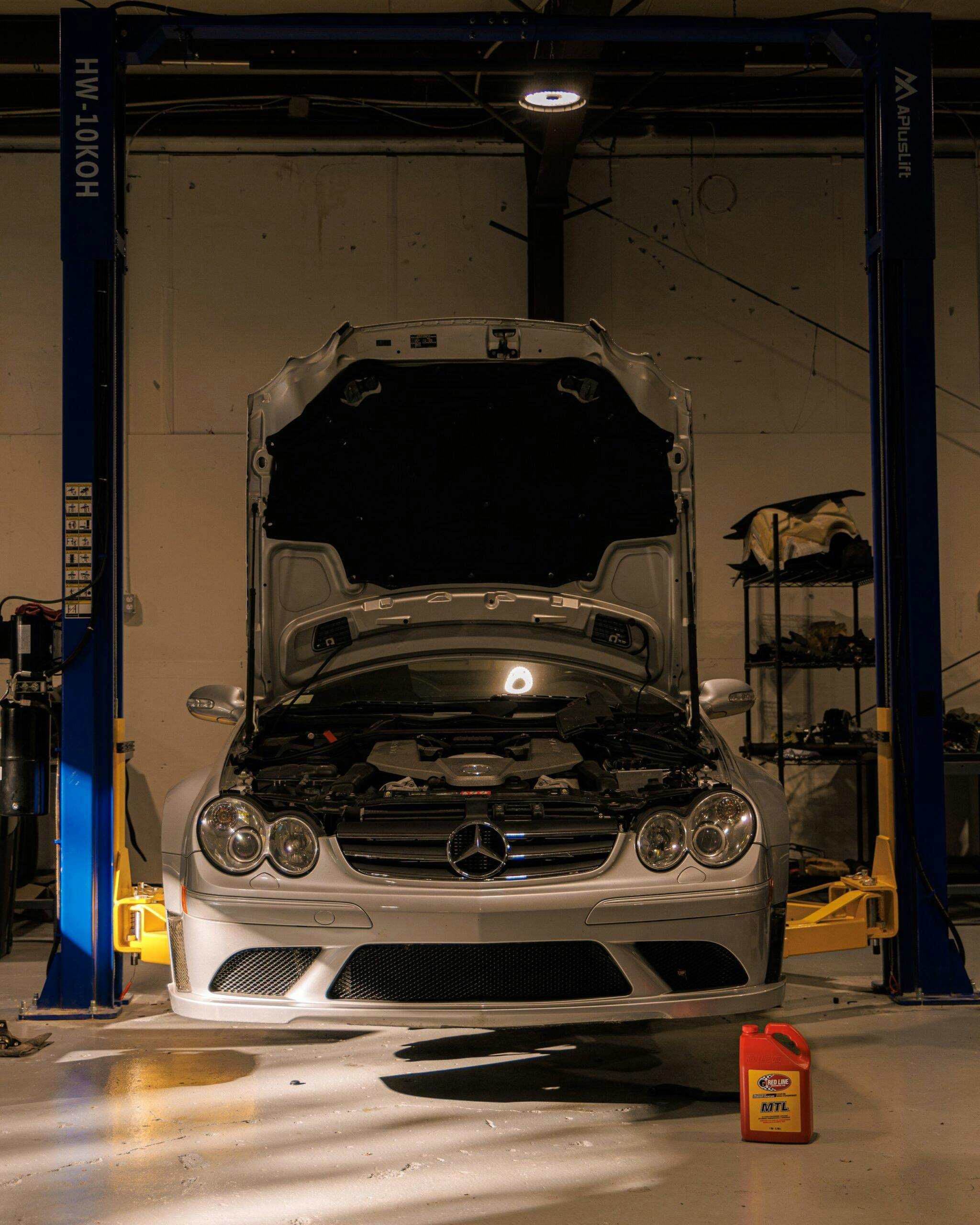
Rather than poke at the membrane of possibility with a customer’s car, Kwiek always starts with an R&D platform, a test mule, to work out the inherent issues that so often arise when charting new territory. In this case, he chose one of the most well-known classic super sedans as his base: The Mercedes-Benz 500E. Given that the lesser 400E from the same era also received the roomier engine bay, why opt for a rare and increasingly valuable collector car? Kwiek says the answer is part fun, and part practicality—at least as much practicality as one can find in a broken-down old German luxury car.
The fun part is a historical thread that he’s wanted to tug on for a while. Kwiek chose the 500E because it was originally powered by the Mercedes-Benz M119, a naturally aspirated, performance-oriented, quad-cam V-8. The marque didn’t build another quad-cam V-8 until almost a decade later, when it rolled out the M156. The parallel concept makes the M156 something of a spiritual successor to the 500E’s original M119.
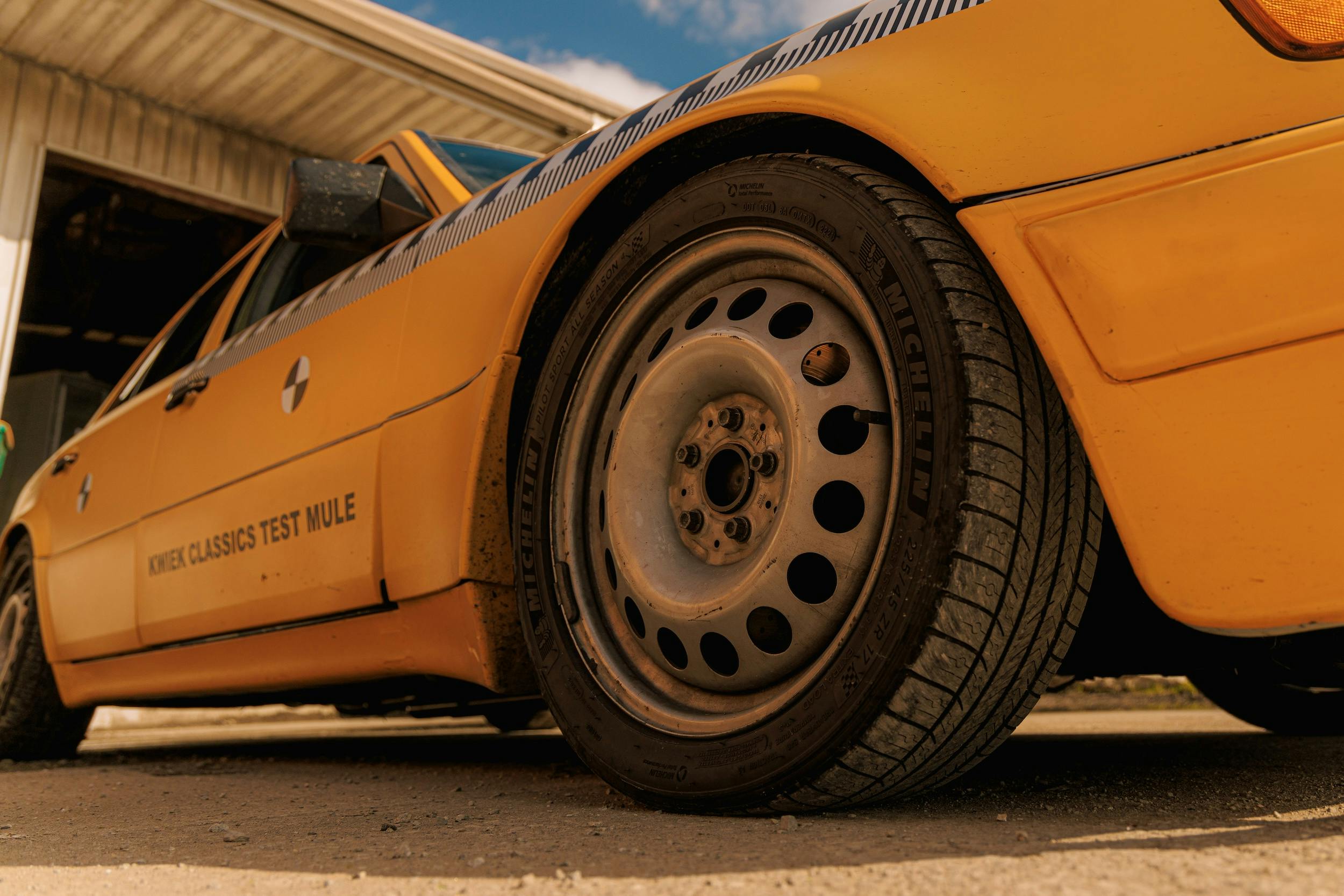
A cool homage, sure, but the kind of people who can appreciate that throughline would typically balk at cutting up a 500E. But if that 500E is already fatigued to the brink of a car crusher? That changes the calculus.
Kwiek had set out to find the cheapest, roughest, most dilapidated 500E that he could, and it came to him via a friend from the Mercedes community who runs a shop in Northern Florida. Kwiek’s buddy had owned the car for about a decade, and when he offered it up, it was on its second engine (blown), and its general condition was reflective of all 550,000 miles clocked on the odometer. One man’s trash…
After buying an M156 engine out of a junked ML63 SUV, it was time to get to work. At this point, Matt’s total hands-on experience with the M156 amounted to doing a burnout in a parking lot in a C 63. But swimming and swapping in the deep end of the proverbial pool is no big deal for someone who’d already done a half-dozen Mercedes engine swaps before having the faintest idea of making a career out of it.
The process wasn’t without its expected setbacks of course, which were mostly related to wiring (Kwiek admitted there was no publicly available information on this front) and getting the engine to comply with a manual transmission (something it had never been attached to from the factory).
After machining a crankshaft adapter by hand to mate the motor to its new manual transmission, building a set of headers to accommodate the 500E’s engine bay dimensions, and tapping the network of Mercedes mechanics and enthusiasts he’d amassed over the years to help with the ECU and wiring, Kwiek got the M156 in the 500E, got it running, and promptly hit another hurdle that had no documented solution. After tracing the engine’s refusal to rev beyond 3,000 rpm to a flywheel issue that was subsequently resolved, the propulsion portion of the project was put to bed.
For all his talents and achievements, Kwiek remains humble and prone to self-deprecating humor, noting that if anyone else out there has pulled off this swap, he’d love to chat with them.
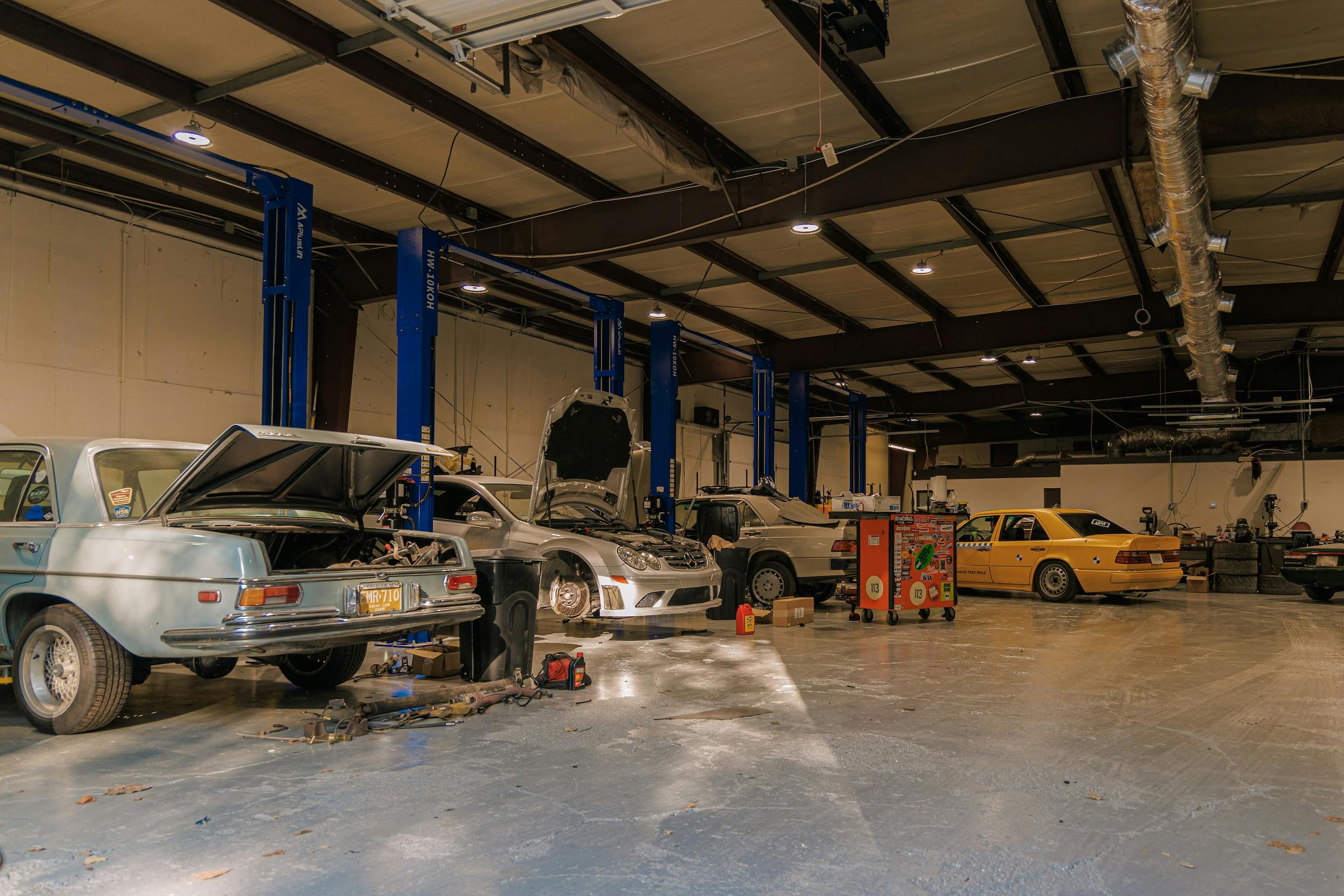
With the mechanical side taken care of, it was time to turn to the visuals. The sunbaked paint wasn’t going to cut it, nor would a single-color wrap. In the spirit of this car being a rolling R&D lab, Kwiek studied old Mercedes media materials to recreate the exact livery used on the marque’s test cars during the 500E era (the 1984–97 W124-generation E-Class). A set of unassuming skinny steel wheels completed the test mule’s look and gave it even more rubber painting prowess.

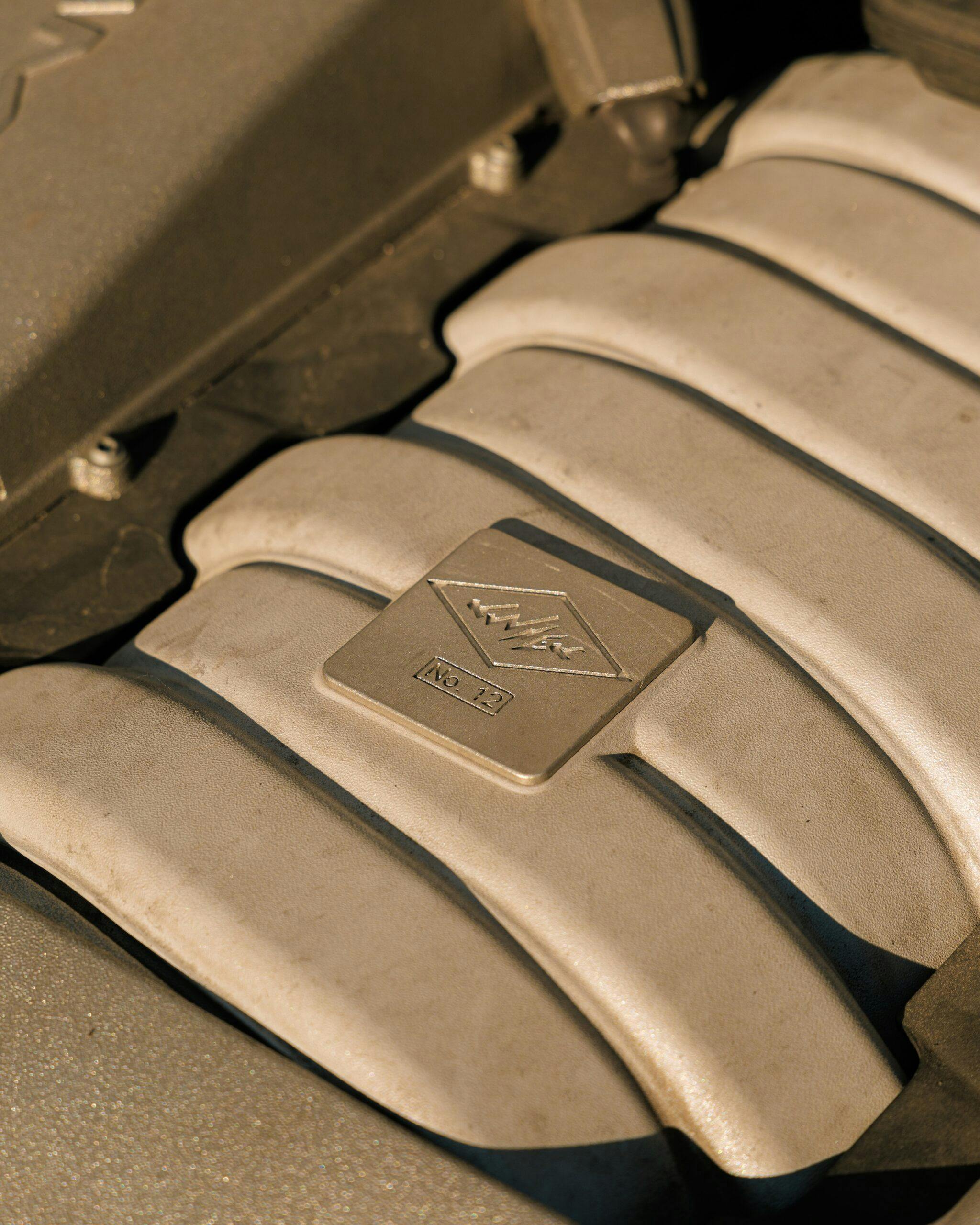
The powertrain was fine, but Kwiek found that the frame rails had all but sheared themselves off the rest of the chassis, so he gave them a quick patch job and promptly set off for a 5,000-mile roundtrip to Monterey to show the car during Car Week. The Frankensteined monster-Merc made the journey, and fulfilled its purpose as a marketing device (you’re reading the proof of that, after all).
Kwiek Classics is now taking orders for M156-powered conversions, and there is a bit of a line forming. Given his company’s trajectory (it’s outgrown two smaller spaces in less than two years), why not move to America’s custom car mecca in Southern California? Kwiek is happy in Nashville, for one, and he’s also found that his location outside of the major enthusiast hubs has been great at weeding out flakes who might drive across town to test a car but aren’t likely to book flights across the country.





So while it’s Nashville for the foreseeable future, Kwiek admits that future growth could change that—he isn’t in the business of sitting still. Kwiek Classics has about a dozen cars in at any given time, getting everything from full conversions to more specific work like manual swaps for modern AMG cars, or multi-link suspension upgrades for the older and more rudimentary machines like the Pagoda and Heckflosse. Kwiek’s main aim now is to standardize a few conversion packages, in part to bolster the brand’s recognizability, but more so to provide him with the freedom to keep pushing what’s possible. He has two full-time employees that he’s training to handle the core business so he can continue doing what he loves: building things that few or no other people have tried, or thought of.
And what’s next for the unconventional 500E? The engine is coming out (and going into something else), and the rest is destined for the back of the shop, where the carcass will be picked for parts, donating its bits one by one to future projects, dying and living on at the same time. “We use the whole buffalo here,” he said with a smile.

























I like seeing the more modern AMG V8 under the hood of a classic MB car.